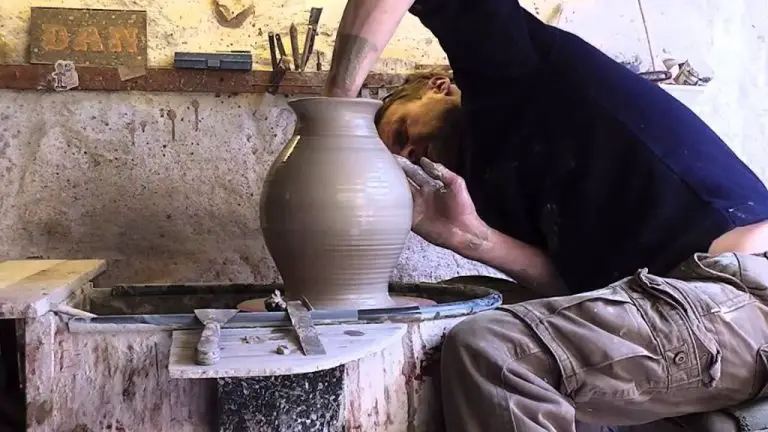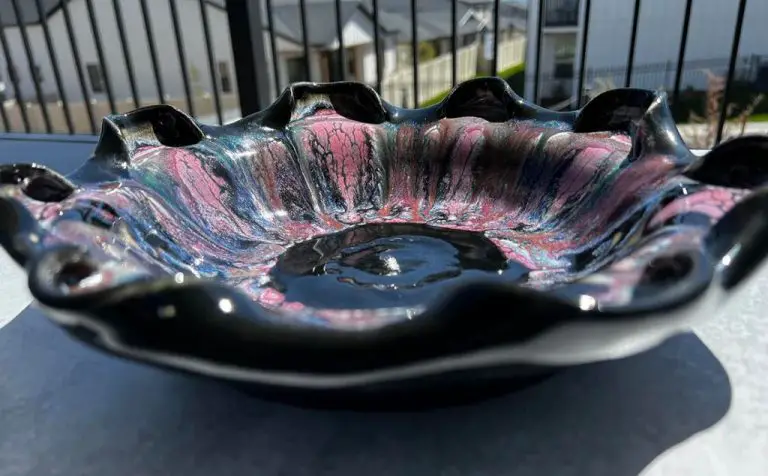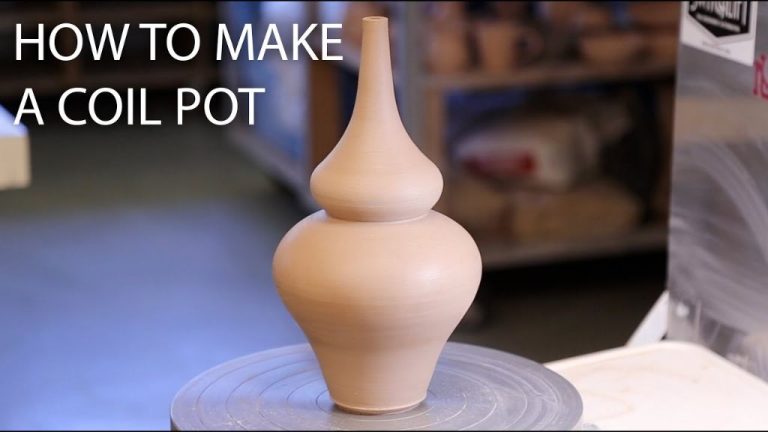How Do We Call A Person Who Makes Pots?
Pottery and ceramics refer to objects made out of clay that have been shaped and then hardened through firing in a kiln. Pottery includes utilitarian wares like bowls, pots, and vases, as well as sculpture and other art forms. Ceramics is a broader term covering any product made from clay and hardened by heat.
The goal of this article is to explore the different names used to describe the artists, artisans, and craftspeople who make clay pots and other ceramic objects. As we’ll see, there are many overlapping terms used in this field, with subtle distinctions. By understanding the nuances of these labels, we gain insight into the art and craft of pottery.
Potter
The most common term for a person who makes pots is “potter.” This term dates back centuries and originated from the Old English word “pottare,” which referred to someone who creates pots out of clay. The word “potter” first appeared in writing in the 14th century. Since then, it has remained the standard and widely used term for someone whose profession involves making pottery.
The term potter refers to artisans who handcraft vessels, plates, bowls, mugs, and other objects out of clay on a potter’s wheel or using other techniques. The wares they produce are often functional items like tableware as well as decorative art pieces. Historically, potters played an important role creating essential everyday household objects across many cultures. Even as mass production techniques emerged, skilled potters continued their craft focused on quality ceramics.
Today, potter remains the most universally recognized and commonly used term for professional ceramicists who specialize in pottery production. Within the field, potter refers to creators working in any ceramic material and a wide range of styles from functional wares to sculpture. The term crossed over from specialized industry vocabulary into widespread mainstream English vernacular. Though new ceramic arts vocabulary emerges, potter remains a standard part of the lexicon used by professionals and general audiences when referring to makers of ceramic vessels and objects.
Ceramist
Ceramist is a less common but still used term for someone who makes ceramic ware like pots, plates, and bowls. The word ceramist comes from the Greek word “keramos” meaning potter’s clay or pottery. Unlike the more general term “potter,” ceramist refers specifically to makers of ceramic items.
The term ceramist emerged in the 19th century to distinguish fine ceramic artists from more utilitarian pottery production. While potters historically created earthenware vessels for practical daily use, ceramists aimed to elevate pottery to the realm of fine art. They experimented with innovative shapes, decorative techniques, and aesthetic designs. Prominent ceramists in the Arts and Crafts movement of the late 1800s and early 1900s include Bernard Leach, Shoji Hamada, and William Staite Murray.
Today, ceramist still connotes a ceramic artist working in the fine arts tradition rather than a potter focused on functional ware. However, the terms are sometimes used interchangeably, especially as the line between fine and applied arts has blurred. Nonetheless, ceramist implies a particular artistic sensibility in working creatively with clay.
Artisan
Artisan is a broader term used to refer to skilled craftspeople who hand make products, rather than mass producing them. Artisans are makers who have mastered their craft through years of training, apprenticeship, and hands-on experience. The hallmark of an artisan is the high level of skill, craftsmanship, and attention to detail exhibited in their creations.
Potters definitely fall under the category of artisans. They are highly skilled in working with clay to create functional and decorative ceramic objects. The pottery craft requires expertise in the properties of clay, the techniques of wheel throwing and hand building, glaze chemistry, and firing kilns. Master potters dedicate their lives to perfecting these specialized skills and expressing their artistic vision through their pottery. Whether producing utilitarian pots and dinnerware or sculptural vessels, the work of a potter reflects a deep understanding and command of their medium.
While the term artisan applies to potters, referring to them more specifically as “potters” denotes their particular mastery of clay as an art form and medium.
Craftsperson
Craftsperson is a gender-neutral alternative to the term “craftsman.” It avoids any gender bias that may be associated with the term “craftsman.” Using craftsperson is more inclusive, since crafts have historically been practiced by both men and women. The term craftsperson recognizes that crafting is not limited to one gender.
The word craftsperson came into use in the late 20th century as society aimed to make language more inclusive. By replacing the masculine suffix “-man” with “-person,” the term includes makers of all genders. Major dictionaries like Merriam-Webster and Oxford now include the definition of craftsperson. It is becoming more widely used in place of craftsman in many contexts.
When referring to someone who creates crafts, using the term craftsperson is recommended. It encompasses craftspeople of any gender identity. The language we use shapes culture and attitudes. Using gender-neutral language like craftsperson promotes inclusion and diversity. This helps create an environment where people of all genders feel welcomed in pursuing creative trades and handmade crafts.
Studio Potter
Studio potters are independent artists who create functional and decorative ceramic objects in a small private workshop or studio. Most studio potters work alone or with a small team of assistants or apprentices. They focus on making unique, handmade pieces that showcase their personal style, creativity, and artistic vision.
Studio potters typically design their own pieces, mixing their own clay and glazes, throwing pots on a wheel or handbuilding sculptural forms, and controlling every step of the production process. This hands-on, start-to-finish approach allows them to experiment and innovate in ways that aren’t possible in mass production factories. Their goal is to produce high-quality, handcrafted work that expresses their artistic identity.
Because they work independently, studio potters have the freedom to explore their interests and develop a signature style over years of practice. Their work often shows a mastery of ceramic techniques, from the fine symmetry of a thrown pot to the intricate patterns of layered glazes. Studio potters aim to create timeless, heirloom-quality objects that bring handmade craftsmanship and beauty into everyday life.
Production Potter
Production potters work for large manufacturers that mass produce pottery and ceramics. They operate machinery and equipment to efficiently make multiples of the same ceramic pieces on an assembly line scale. Rather than creating unique, handmade artisanal wares, production potters focus on repeating the same throwing, molding, glazing, and decorating techniques again and again.
The goal of a production potter is consistency and efficiency in order to maximize output. Their pottery skills are focused on rapidly producing ceramic products that strongly adhere to the specifications, dimensions, and designs set by the manufacturer. This requires great technical proficiency with the ceramic production process to repeatedly make uniform pieces.
Working on a production line under strict deadlines, production potters do not get the same creative freedom to experiment as independent studio potters. However, they gain extensive experience with efficiently executing tried and true ceramic techniques. Large manufacturers hire production potters skilled at rapidly meeting targets and maintaining quality standards for high volume production.
Ceramicist
Ceramicist is a less common variant of ceramist. The key difference between the two terms is that ceramicist refers more specifically to someone who works with ceramic materials, while ceramist can refer to someone who creates pottery and other ceramic wares or someone who studies ceramics. The suffix -ist denotes someone who practices or has a special interest in a particular field or subject.
As an occupational title, ceramicist refers to an artist or artisan who creates ceramic art and objects. They work with clay and other ceramic materials to make pottery, sculpture, tiles, and other items. Ceramicists create works using different techniques like throwing, handbuilding, slipcasting, and mold making. Their creations may be functional, like bowls and mugs, or purely decorative, like ceramic wall art.
Ceramicist is not an extremely common job title compared to the broader term potter or ceramist. However, some ceramic artists and artisans prefer the term ceramicist as it puts the focus on their chosen medium – ceramics. It distinguishes them from other types of artisans working in different materials like glass, metal or wood.
Thrower
A thrower refers specifically to a potter who forms pots and bowls on a potter’s wheel. On a wheel, the potter can use centrifugal force to shape softer clay into symmetrical forms. This method produces round and cylindrical shapes like bowls, cups, and vases. It requires skill and experience to center the clay on the wheel and manipulate it into the desired form with the hands as the wheel spins. Throwers develop technique over many years of practice using the wheel to throw pots. They utilize their skills in muscle memory, balance, and coordination to expertly shape clay in this dynamic and ancient process. Though some potters handbuild or pour molds, throwers specialize in wheel-thrown pottery which has a distinctive look and feel. Their work on the wheel is an artform that blends athleticism, creativity, and a deep knowledge of the clay.
Conclusion
Throughout history, there have been several terms used to describe someone who makes pottery. The most common terms are “potter”, “ceramist”, and “artisan”.
“Potter” is the most general term that refers to someone who shapes clay into pottery and other ceramic wares. It dates back centuries and continues to be widely used today.
“Ceramist” is a more modern term that arose in the 20th century to describe a potter who creates ceramic art. Ceramists are potters who focus on artistic design and creation.
“Artisan” is a broad term for a skilled craft worker who makes items by hand. It can refer to potters but also other types of crafters.
Other terms like “studio potter”, “production potter”, and “ceramicist” arose to make distinctions between potters working in different environments and production scales. But the most common terminology used today remains “potter” and “ceramist”.




